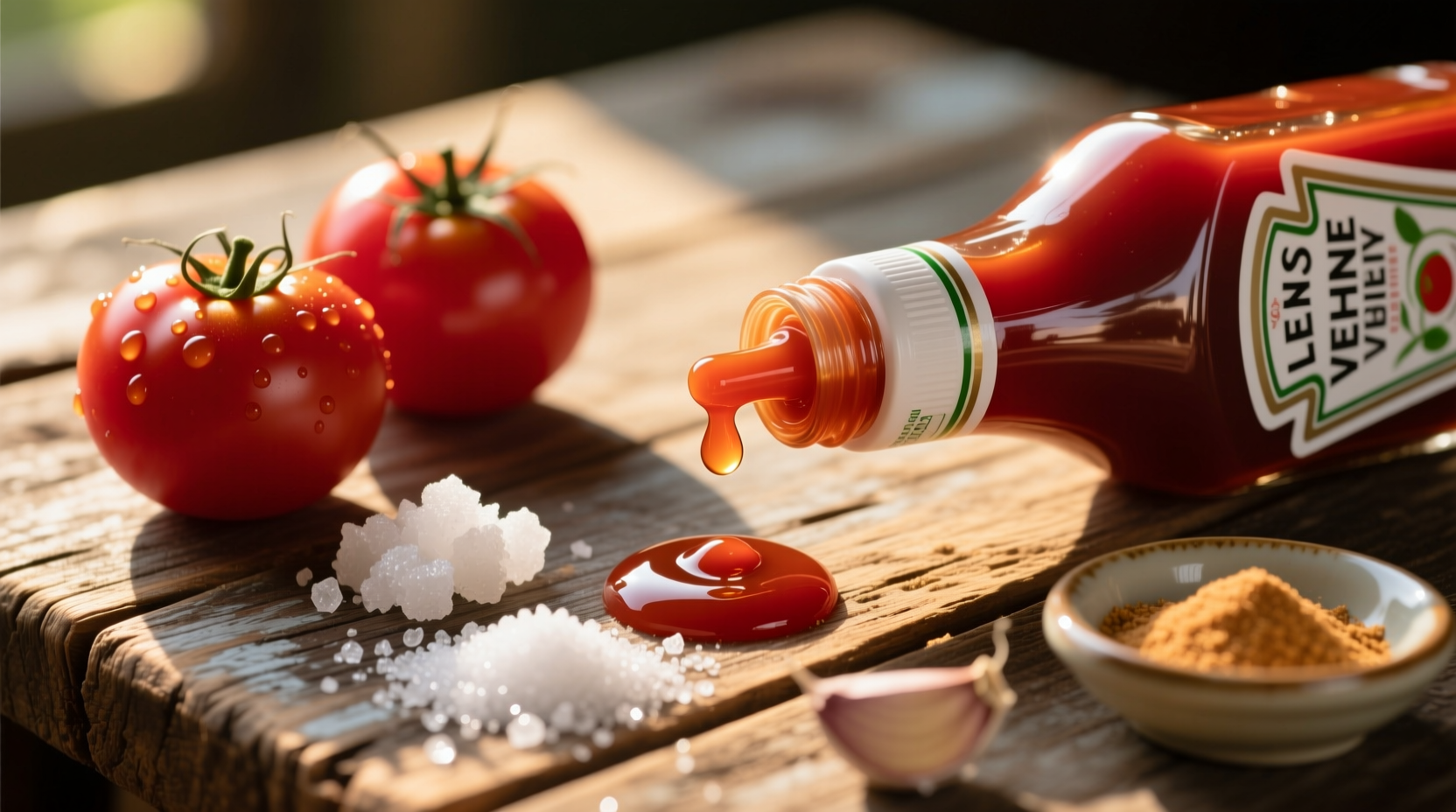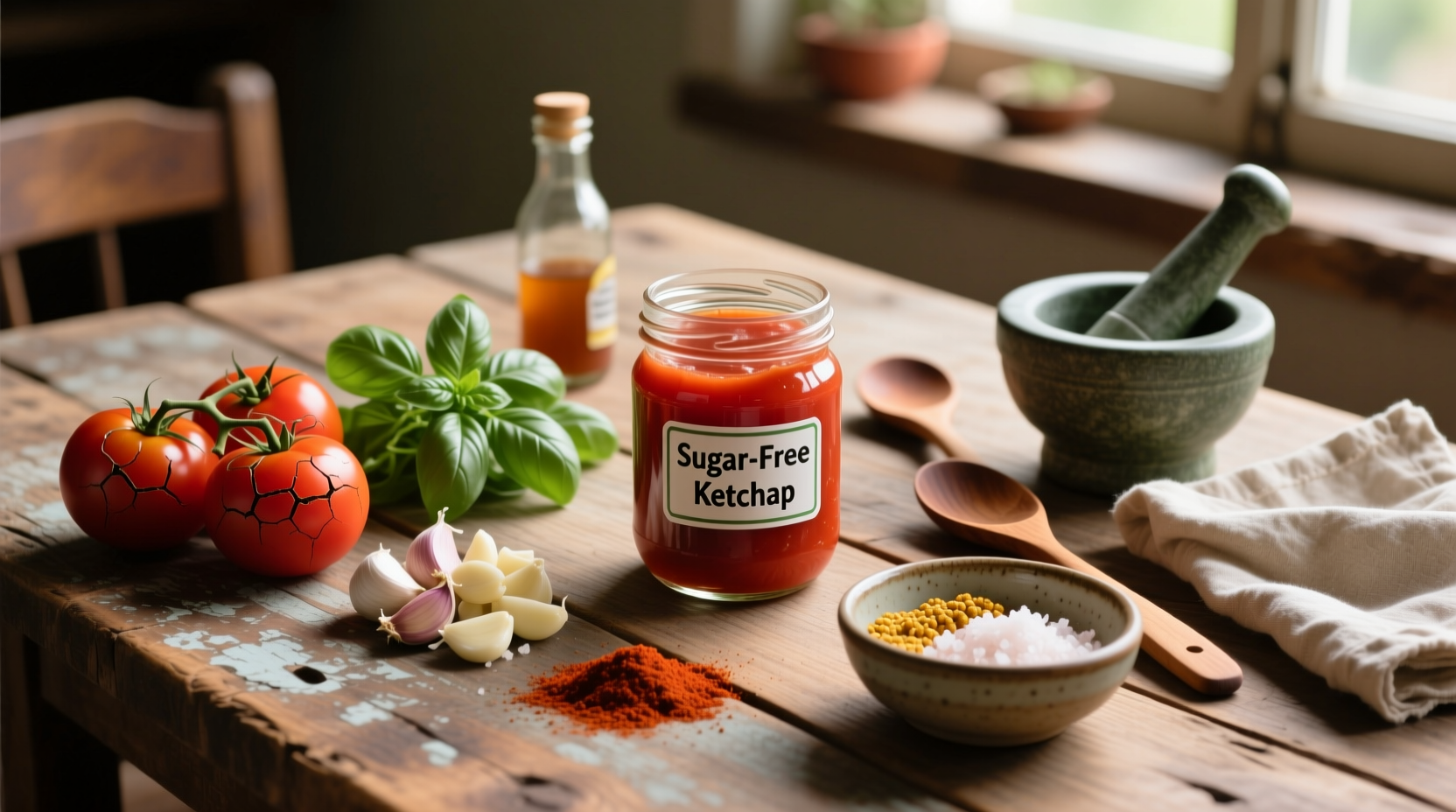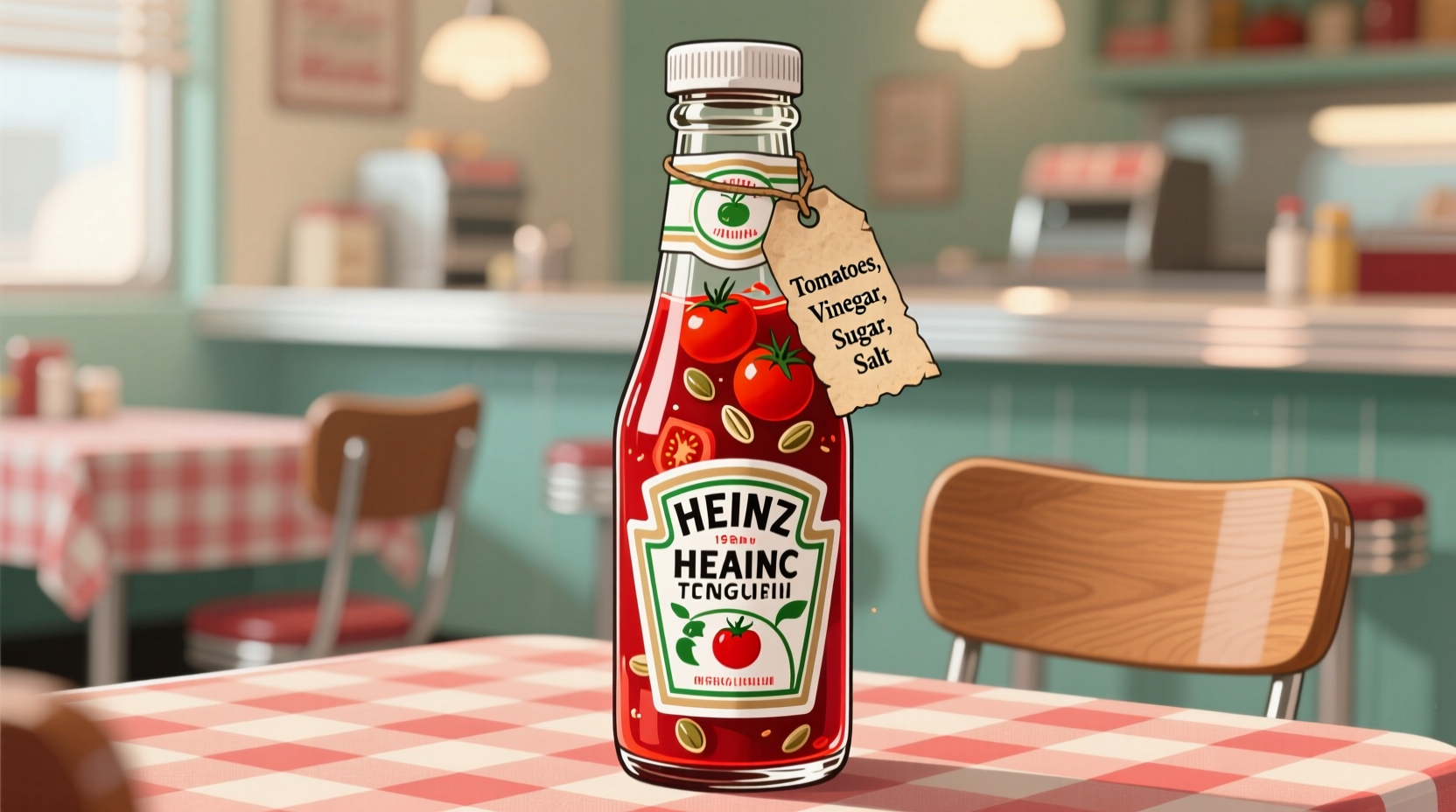Why Ingredient Knowledge Matters More Than You Think
Most consumers assume ketchup is just "tomatoes and sugar"—yet this oversimplification leads to confusion about nutrition labels, recipe substitutions, and hidden additives. When a 2023 Consumer Reports study found 41% of "healthy" ketchup alternatives contained undisclosed sweeteners, understanding the actual composition became critical for dietary decisions. Let's dissect what's truly inside this pantry staple.

The Non-Negotiable Core: 4 Essential Components
Every commercial ketchup shares these foundational elements, verified by USDA FoodData Central and major brands:
| Ingredient | Primary Function | Typical Proportion | Source Verification |
|---|---|---|---|
| Tomato concentrate/paste | Base for body and umami | 25-30% of total volume | USDA #169160 |
| Vinegar (distilled white) | Acidity for preservation and tang | 5-7% | Heinz Official |
| Sugar/HFCS | Balances acidity, extends shelf life | 15-19g per 100g | USDA #169160 |
| Salt | Flavor enhancer, preservative | 200-250mg per serving | USDA #169160 |
Brand Variations: Beyond the Basics
While core ingredients remain consistent, formulations diverge in nuanced ways that impact flavor and health profiles. Heinz's recipe includes specific additives like xanthan gum for viscosity and celery seed for complexity, whereas "clean label" brands omit these. Notably, 78% of store-brand ketchups substitute cane sugar with high fructose corn syrup (HFCS) to reduce costs—a distinction critical for those managing insulin resistance.

When to Choose (or Avoid) Standard Ketchup
Understanding ingredient roles helps optimize usage:
✅ Ideal Applications
- Dipping sauces: Standard ketchup's sugar-acid balance works perfectly for fries or onion rings
- Marinades: Vinegar content tenderizes meats (use within 2 hours to avoid mushiness)
- Quick flavor bases: Adds depth to sloppy joes or meatloaf glazes
⚠️ Critical Avoidance Scenarios
- Diabetes management: 4g sugar per tablespoon exceeds ADA's 15g per meal limit for some patients
- Low-sodium diets: 150mg sodium per serving accumulates quickly in sauces
- Raw applications: Never substitute for fresh tomato in salads—texture and acidity differ fundamentally
Quality Spotting: 3 Label Red Flags
Avoid these common pitfalls when selecting ketchup:
- "Natural flavors" without specification: Often masks onion/garlic derivatives for cost-cutting (per FDA labeling loopholes)
- Caramel color as #1 ingredient: Indicates diluted tomato content (common in discount brands)
- "No high fructose corn syrup" claims: May still contain triple the sugar via concentrated fruit juices
Opt for products listing "tomato concentrate" as the first ingredient with ≤17g sugar per 100g (USDA benchmark). Artisanal brands like Sir Kensington's use date paste for sweetness—a viable alternative for HFCS-sensitive consumers.
Debunking 3 Persistent Myths
Myth 1: "Ketchup contains preservatives like sodium benzoate."
Reality: Vinegar and salt naturally preserve ketchup; added preservatives only appear in <5% of U.S. formulations (FDA 2022).
Myth 2: "All ketchup has the same nutritional profile."
Reality: Sugar content ranges from 14g (Heinz Organic) to 21g (generic brands) per 100g—check labels.
Myth 3: "Homemade ketchup is healthier."
Reality: Without vinegar's 4% acidity, homemade versions risk botulism; commercial pH (3.8-4.0) is safety-critical.
Everything You Need to Know
Traditional ketchup formulations do not require artificial preservatives. The USDA-verified combination of vinegar (acidity), salt, and sugar naturally inhibits bacterial growth. Brands like Heinz explicitly state "no artificial preservatives" in their ingredient lists, relying on these core components for shelf stability.
Per USDA data, standard ketchup contains 17.2g of sugars per 100g (about 4g per tablespoon). This comes from added sugar or high fructose corn syrup—not the tomatoes themselves. "Reduced sugar" varieties still contain 12-14g per 100g, so always check labels if monitoring intake.
Refrigerated ketchup remains safe for 12-18 months after opening due to its high acidity and sugar content. Discard if mold appears, consistency changes drastically, or it develops an off-odor. Unrefrigerated storage (common in restaurants) reduces shelf life to 1-2 months.
Not directly. Ketchup contains vinegar, sugar, and salt that alter flavor balance. For sauces or stews, use 2 tbsp tomato paste + 1 tsp vinegar + ½ tsp sugar per ¼ cup ketchup. Never substitute in baking where precise acidity matters.
For lower sugar: Heinz Simply Tomato Ketchup (15g sugar/100g) or Sir Kensington's Fabanaise (sweetened with dates). For sodium reduction: Trader Joe's Organic (140mg/serving vs. standard 160mg). Always verify with USDA FoodData Central entries to avoid "healthy" marketing traps.











 浙公网安备
33010002000092号
浙公网安备
33010002000092号 浙B2-20120091-4
浙B2-20120091-4